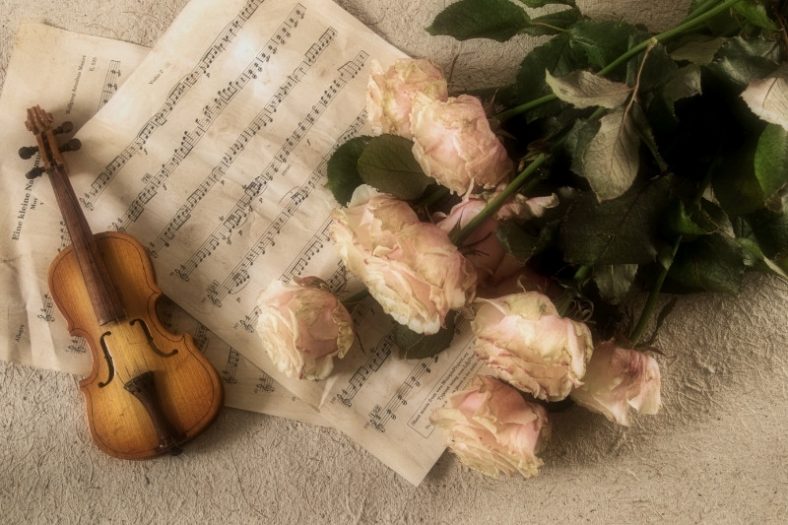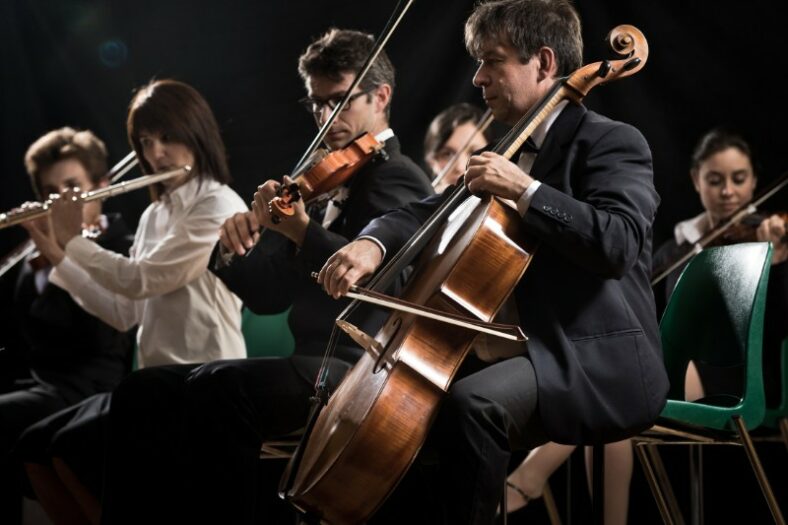Characteristics of Classical Music

Classical music followed the Baroque period in the 17th and early 18th centuries. It lasted roughly from 1750 to 1820. It is characterized by less complex materials, thinner textures, and a predominance of homophonic harmony.
In terms of musical structure, there was more diversity and contrast. Still, it is reasonable to describe Classical music as “authoritative and conventional”. It created many standards that composers still follow today.
The casually-used term ‘classical music’ (with minuscule c) generally refers to the music of the Western art tradition. This includes music that is not pop, world, jazz, and so on. This is because a lot of what we know about Western music today came from the Classical period.
Contents
Characteristics of Classical Music
1. Simplicity
Unlike the previous Baroque era, the music of this time was made to be less complicated.
In contrast to complex melodies and embellishments, this form used simple melodies and large ensembles to sustain them. This made it easier for musicians to read, making the music feel softer and more pleasant.
Baroque music had embellished melodies, complex textures and patterns, and emotional extremes. Baroque musical styles continued to influence classical period composers, musicians, and listeners.
Following this, composers started to put more emphasis on form and function. They used unique, catchy, single-line melodies and simple tonal harmony.
To get new variations, composers used familiar melodies from folk music. Additionally, they modified the tonality, speed, and dynamics. From a state of silent respect for the Divine, and crucial questions, music was evolving. More efficiency was valued above grandeur in modern music. It replaced the sense of surprise and wonder associated with Baroque music’s intricacy.
This pattern began in the Classical Era but developed throughout the Romantic Age. In short, less Baroque extravagance is associated with Classical music.
2. Accessibility
It was in the late Baroque period that public concert halls were first built. This allowed for wide audiences to see and hear classical music performances.
Early classical composers mostly still worked in aristocratic courts. However, public concerts started to become more popular across Europe. New listeners emerged due to the music’s catchy melodies and less complex structures.
In the Classical period, the number of public concert halls with audiences grew. It became an important source of income for composers and artists. This made Classical music more accessible, popular, and inclusive than Baroque music.
At the time, Baroque music was mostly presented as chamber music for wealthy patrons. Musical participation finally became open to the middle class as a result.
A new era began in which musicians no longer had to rely on churches or courts to play their music. This gave birth to the practice of creating music specifically for public performances.
3. Contrasting Moods
The mood of a Classical piece shifts either moderately or dramatically, reflecting euphoria and melancholy in opposition to one another.
As this feature was one of the innovations of the time, it makes sense to compare it with Baroque music. Classical music doesn’t emphasize a singular devotion as Baroque music does. It is developed to incorporate stark contrasts, sometimes even within the same theme.
A classical work contains a greater variety of nuances. In Baroque music, the goal was to maintain a consistent mood throughout the piece. For example, if the tune is melancholy, it stays sad the entire time.
Classical music, on the other hand, is a lot more diverse. It pushes you on an emotional roller coaster. There may be times when you are joyful, and other times when you are sad, so there are highs and lows.
Classical composers were able to bring together a variety of emotions in several ways. This included syncopations with instant pauses, counter themes, and motifs in different tonal keys with progressive dynamics.
4. Texture
When composers began to focus on one melody, the homophonic texture became more popular.
Chordal accompaniment is often heard in a single line as the texture of Classical compositions. Also, instrumental melodies tend to flow more at a gradual pace with fewer jumps than in the Baroque period because of this emphasis on melody. Afterward, the audience was still singing the songs long after the curtain had come down.
Everything in the Baroque era was incredibly difficult and passionate. From instrumental music to talented opera singers who wowed audiences. Classical music, however, simplifies things a bit and provides greater accuracy.
Counterpoint, a formal term for polyphony, was quite popular throughout the Baroque era. Polyphony refers to the simultaneous playing of multiple melodies, which can be quite difficult to play, and also listen to.
Unlike the complexity of baroque music, classical music had light simplicity. One of the recurring themes of this period was the idea that the universe was simple, set, beautiful, and fulfilling.
Therefore, composers tried to incorporate an organized simplicity into their work. Musical cadences and chord progressions show the need for order that dominated that period. Chords played a significant role in establishing a feeling of harmony and organization.
To see this in action, consider Mozart’s pieces for piano. Chord patterns may be seen in the left hand, and this creates an impression of homophony.
5. Themes and Melody
Themes and melodies in classical music are balanced and symmetrical. They incorporate a folk or popular character that makes them memorable and catchy.
It’s common for classical themes and melodies to be made up of two phrases that are the same length. If the second phrase of a theme begins similarly to the first, it concludes more definitively. It will certainly be easier to sing because of the certainty of the ending. Also, a melodic phrase usually consists of two or four bars, like a question and answer.
Composers occasionally used popular melodies as inspiration. But, more often than not, they created unique themes with a popular character, even in the most complex works. This makes classical melodies among the most melodic and easy to remember.
Instruments used in Classical Music

The evolution of orchestration and the piano’s invention occurred during the Classical era.
Since instrumental music has become increasingly popular, we have seen the birth of new forms of music. During the classical period, the orchestra took the shape that you can still see today. Also, the Symphony became a structured form of music.
It is possible to witness a string quartet in action. That was yet another invention that came along throughout the classical period.
These are some of the instruments that are frequently heard in Classical music. This includes orchestras, chamber music groups, and various ensembles:
Strings
- Violins (first and second),
- Violas,
- Violoncellos
- Cello,
- Double basses.
Winds
- Flutes,
- Oboes,
- Clarinets,
- Bassoons,
- Horns,
- Trumpets.
Percussions
- Timpani.
Even throughout the Classical era, symphonies weren’t always the massive works that they would become. They were usually string quartets, solo concertos, or trios (traditionally in sonata form).
During the Classical period, the piano also emerged as an important development. Toward the end of the Baroque era, the piano was being constructed. As the most popular instrument of the classical era, the harpsichord gave way to the piano.
Famous Classical Music Composers
Famous classical music composers are commonly known as members of the Viennese School. It was considered the heart of European Classical music.
Wolfgang Amadeus Mozart is the most significant and famous composer, not only of the Classic era but of all times. In the brief time he had, he produced hundreds of Classical compositions. Each represents flawless purity.
Another famous Classical music composer is Franz Joseph Haydn. He also composed hundreds of pieces for symphonies, quartets, and other kinds of instrumental music.
Towards the end of the Classical and the beginning of the Romantic period, other famous classical composers emerged. Composers like Franz Schubert and Ludwig van Beethoven began redefining Classical period music standards.
Summary
The classical music era spanned roughly 70 years, from 1750 to 1820. It is characterized by less complex compositions with thinner textures and homophonic harmony.
Music underwent more transformations during this period than it had ever before. Concerts weren’t only for aristocrats anymore. The musical forms, instruments, and orchestras all took a new shape. They had a huge impact on music writing until today’s popular songs.





